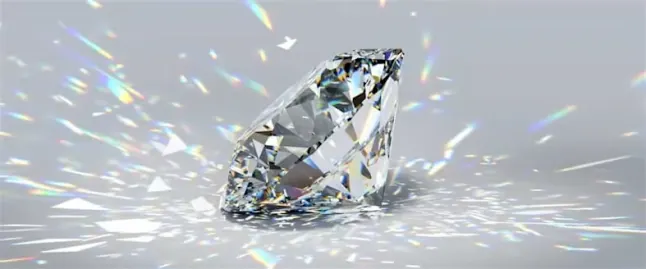Diamond Fluorescence vs. Phosphorescence: Key Differences Explained
A comprehensive comparison of diamond fluorescence and phosphorescence
- Fluorescence makes a diamond glow under certain lighting (like blacklight); phosphorescence means the glow stays briefly after the light is gone
- Only fluorescence is graded by GIA (None to Very Strong)
- Fluorescence appears in ~25–30% of natural diamonds; phosphorescence is rare, mostly in HPHT lab-grown
- The glow is usually blue, though phosphorescence can show green, yellow, or orange
- Over 97% of fluorescent diamonds look completely normal; ~2–3% may appear slightly hazy in sunlight
Fluorescence and phosphorescence are two fascinating optical phenomena observed in some diamonds. These naturally occurring effects can influence a diamond’s appearance under various lighting conditions, particularly when exposed to ultraviolet (UV) light.
Understanding the distinction is important because they are often mistaken for one another. In the following section, we’ll explore the key differences between fluorescence and phosphorescence to provide a clearer understanding.
Diamond Fluorescence Explained
Diamond fluorescence is a natural reaction found in approximately 25-30% of all GIA-graded diamonds. Certain minerals or trace impurities within the diamond's crystal structure cause it to emit a visible glow when exposed to UV light. This glow lasts only as long as the light source is present.
Diamond Phosphorescence Explained
Diamond phosphorescence, on the other hand, is also a naturally occurring characteristic but produces a distinctly different optical effect under UV light. It is typically caused by the presence of boron and is especially common in lab-grown diamonds produced through the HPHT (High Pressure High Temperature) process.
The key difference between a phosphorescent and a fluorescent diamond is that the glow in a phosphorescent diamond continues for a short time, typically a few seconds to several minutes, even after the UV light source is removed.
Key Differences at a Glance

Shedding Light on the Glow
While both fluorescence and phosphorescence cause diamonds to glow under UV light, they differ in both duration and behavior.
Fluorescence is less common in lab grown diamonds, and ceases immediately when the UV light is removed, whereas phosphorescence, though more common, is characterized by a glow that persists for several seconds or even minutes.
A clear understanding of these phenomena not only deepens appreciation for the science behind diamonds but also aids buyers in making more informed decisions.
Have more questions? Our expert gemologists are here to help!

